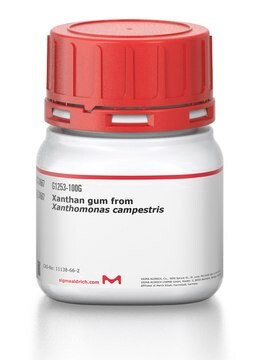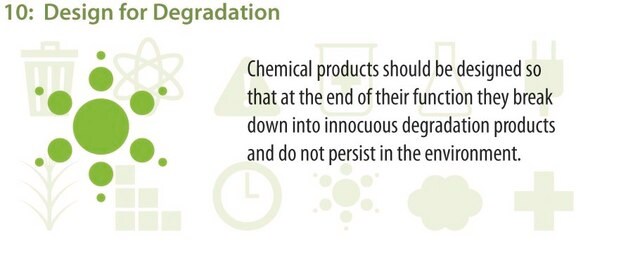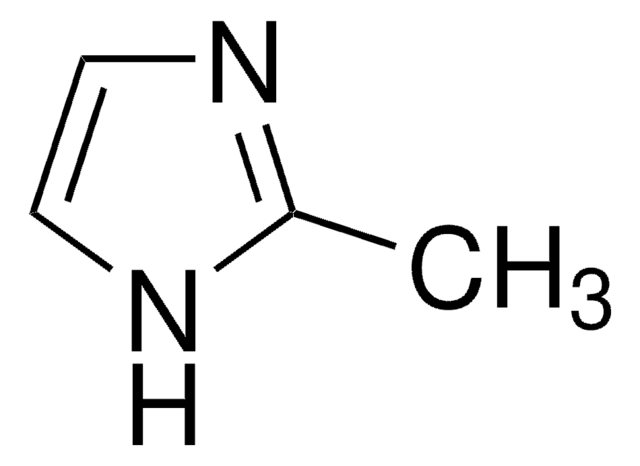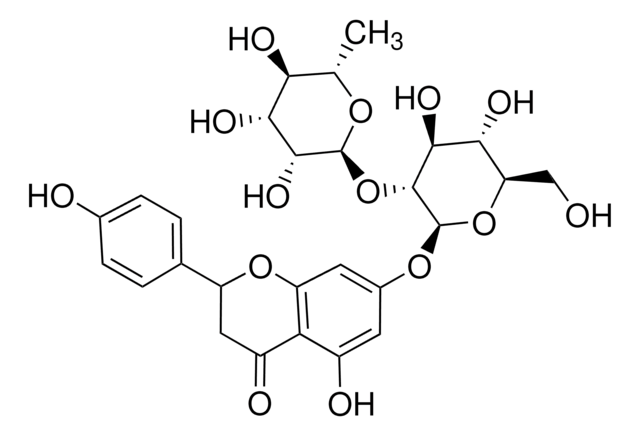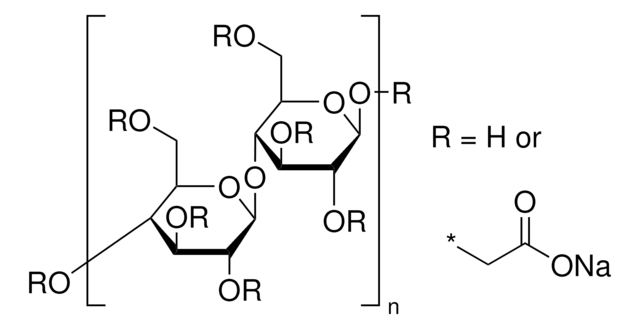G0753
Locust bean gum from Ceratonia siliqua seeds
Synonyme(s) :
Galactomannan polysaccharide, Gum, locust bean, Manno-galactan (main component)
Se connecterpour consulter vos tarifs contractuels et ceux de votre entreprise/organisme
About This Item
Numéro CAS:
Numéro CE :
Numéro MDL:
Code UNSPSC :
12352201
Nomenclature NACRES :
NA.25
Produits recommandés
Source biologique
Ceratonia siliqua seeds
Niveau de qualité
Forme
powder
Couleur
beige
Température de stockage
room temp
Application
Locust bean gum (LBG, galactomannan polysaccharide) from Ceratonia siliqua seeds may be used as a substrate to help identify, differentiate and characterize mannanase(s), such as the β-Mannanases (EC 3.2.1.78). LBG may be used in the development of drug delivery devices. LBG may be used to study its properties as a protective agent on both eucalyptus and microcrystalline cellulose destruction of crystallinity by ball milling. LBG may be used to study its properties as a food additive that reduces spoilage caused by Aspergillus flavus. LBG may be used as a starting material for the organic synthesis of hyperbranched N-glycan core structures.
Autres remarques
Believed to be a straight chain polymer of mannose with one galactose branch on every fourth mannose and a M.W. of approx. 310 kDa.
To gain a comprehensive understanding of our extensive range of Oligosaccharides for your research, we encourage you to visit our Carbohydrates Category page.
Code de la classe de stockage
11 - Combustible Solids
Classe de danger pour l'eau (WGK)
WGK 2
Point d'éclair (°F)
Not applicable
Point d'éclair (°C)
Not applicable
Équipement de protection individuelle
Eyeshields, Gloves, type N95 (US)
Faites votre choix parmi les versions les plus récentes :
Déjà en possession de ce produit ?
Retrouvez la documentation relative aux produits que vous avez récemment achetés dans la Bibliothèque de documents.
Les clients ont également consulté
S Sánchez-Segado et al.
Bioresource technology, 104, 324-328 (2011-11-22)
A process for the production of ethanol from carob (Ceratonia siliqua) pods was designed and an economic analysis was carried out for a hypothetical plant. The plant was assumed to perform an aqueous extraction of sugars from the pods followed
Hossein Vaheed et al.
Journal of industrial microbiology & biotechnology, 38(1), 101-111 (2010-09-08)
In this research, ethanol production from carob pod extract (extract) using Zymomonas mobilis with medium optimized by Plackett-Burman (P-B) and response surface methodologies (RSM) was studied. Z. mobilis was recognized as useful for ethanol production from carob pod extract. The
T Mohammadi Moghaddam et al.
Journal of the science of food and agriculture, 91(6), 1083-1088 (2011-02-11)
Lallemantia royleana (Balangu) is a mucilaginous endemic plant which is grown in different regions of world. The flow behaviour of Balangu seed extract (BSE) and its mixture with xanthan, guar and locust bean gums at 1:3, 1:1 and 3:1 ratios
Camila P Favaro et al.
Biomolecules, 10(2) (2020-02-09)
Soluble coffee offers the combined benefits of high added value and practicality for its consumers. The hydrolysis of coffee polysaccharides by the biochemical route, using enzymes, is an eco-friendly and sustainable way to improve the quality of this product, while
B M Smith et al.
Journal of food science, 77(6), C684-C689 (2012-06-08)
Carob germ proteins have been shown to have functional properties similar to wheat gluten enabling formulation and production of yeast leavened gluten-free baked goods from a true dough rather than a stiff batter. The purpose of this research was to
Notre équipe de scientifiques dispose d'une expérience dans tous les secteurs de la recherche, notamment en sciences de la vie, science des matériaux, synthèse chimique, chromatographie, analyse et dans de nombreux autres domaines..
Contacter notre Service technique